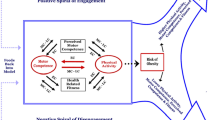Abstract
Purpose
This paper reports on the psychometric properties of a computerized adaptive test (CAT) version of the Mobility Assessment Tool (MAT) for older adults (MAT-CAT).
Methods
An item pool of 78 video-animation-based items for mobility was developed, and response data were collected from a sample of 234 participants aged 65–90 years. The video-animation-based instrument was designed to minimize ambiguity in the presentation of task demands. In addition to evaluating traditional psychometric properties including dimensionality, differential item functioning (DIF), and local dependence, we extensively tested the performance of several MAT-CAT measures and compared their performances with a fixed format.
Results
Operationally, the MAT-CAT was sufficiently unidimensional and had acceptable levels of local independence. One DIF item was removed. Most importantly, the CAT measures showed that even starting with a single fixed item at the mean ability, the adaptive version delivered better performance than the fixed format in terms of several criteria including the standard error of estimate.
Conclusion
The MAT-CAT demonstrated satisfactory psychometric properties and superior performance to a fixed format. The video-animation-based adaptive instrument can be used for assessing mobility with specificity and precision.





Similar content being viewed by others
Abbreviations
- DIF:
-
Differential item functioning
- MAT:
-
Mobility Assessment Tool
- HRQOL:
-
Health-related quality of life
- PRO:
-
Patient-reported outcome
- HIPAA:
-
Health Insurance Portability and Accountability Act of 1996
- CAT:
-
Computerized adaptive test
References
Rejeski, W. J., Mihalko, S. (2001). Physical activity and quality of life in older adults. The Journals of Gerontology, 56A(Special Issue II), 23–35.
Guralnik, J. M., Ferrucci, L., Simonsick, E. M., Salive, M. E., & Wallace, R. B. (1994). A short physical performance battery assessing lower extremity function: Association with self-reported disability and prediction of mortality and nursing home admission. The Journals of Gerontology, 49, M85–M94.
Newman, A. B., Simonsick, E. M., Naydeck, B. L., et al. (2006). Association of long-distance corridor walk performance with mortality, cardiovascular disease, mobility limitation, and disability. JAMA, 295(17), 2018–2026.
Ware, J. E., Kosinski, M., & Keller, S. K. (1994). SF-36 physical and mental health summary scales: A user’s manual. Boston, MA: The Health Institute.
Cella, D. F., Tulsky, D. S., Gray, G., et al. (1993). The functional assessment of cancer therapy scale: Development and validation of the general measure. Journal of Clinical Oncology, 11(3), 570–579.
Rejeski, W., Ip, E., Marsh, A., Miller, M., & Farmer, D. (2008). Measuring disability in older adults: The ICF framework. Geriatrics & Gerontology International, 8(1), 48–54.
Reeve, B. B., Hays, R. D., Bjorner, J. B., et al. (2007). Psychometric evaluation and calibration of health-related quality of life item banks: Plans for the Patient-Reported Outcomes Measurement Information System (PROMIS). Medical Care, 45, S22–S31.
Marsh, A. P., Ip, E. H., Barnard, R. T., Wong, Y. L., & Rejeski, W. J. (2011). Using video animation to assess mobility in older adults. Journals of Gerontology. Series A, Biological Sciences and Medical Sciences, 66(2), 217–227.
Rejeski, W. J., Ip, E. H., Marsh, A. P., & Barnard, R. T. (2010). Development and validation of a video-animated tool for assessing mobility. Journals of Gerontology. Series A, Biological Sciences and Medical Sciences, 65(6), 664–671.
Curcio, C. L., Gómez, J. F., Lord, C., Ip, E. H., Marsh, A. P., Rejeski, W. J., Alvarado, B. E. (2011). Validity and reliability of Spanish version of the Mobility Assessment Tool short version: Results from a Colombian study in elderly populations. Presented at the 2011 Canadian Association on Gerontology Pan-American Congress on Geriatrics and Gerontology, Ottawa, Canada, October 2011.
Wainer, H., et al. (Eds.). (2000). Computerized adaptive testing: A primer (2nd ed.). Mahwah, NJ: Lawrence Erlbaum Associates.
R Development Core Team. R: A language and environment for statistical computing. R Foundation for Statistical Computing, Vienna, Austria. 2011. ISBN: 3-900051-07-0, http://www.R-project.org/.
Rizopoulos, D. (2006). ltm: An R package for latent variable modeling and item response theory analyses. Journal of Statistical Software, 17(5), 1–25.
Gibbons, R. D., & Hedeker, D. R. (1992). Full-information item bifactor analysis. Psychometrika, 57(3), 423–436.
Sharma, S., Mukherjee, S., Kumar, A., & Dillon, W. R. (2005). A simulation study to investigate the use of cutoff values for assessing model fit in covariance structure models. Journal of Business Research, 58(1), 935–943.
Yen, W. M. (1984). Effects of local item dependence on the fit and equating performance of the three-parameter logistic model. Applied Psychological Measurement, 8(2), 125–145.
Hochberg, Y. (1988). A sharper Bonferroni procedure for multiple tests of significance. Biometrika, 75(4), 800–802.
Lord, F. M. (1977). A broad-range tailored test of verbal ability. Applied Psychological Measurement, 1(1), 95–100.
Cai, L., Thissen, D., & du Toit, S. (2011). IRTPRO user’s guide. Lincolnwood: Scientific Software International, IL.
Muthén, L. K., & Muthén, B. O. (2007). Mplus user’s guide (5th ed.). Los Angeles, CA: Muthén & Muthén.
Benjamini, Y., & Hochberg, Y. (1995). Controlling the false discovery rate: A practical and powerful approach to multiple testing. Journal of the Royal Statistical Society. Series B, 57(1), 289–300.
Acknowledgments
The research has been supported by the following grants from the National Institute of Aging: P30 AG21332.
Author information
Authors and Affiliations
Corresponding author
Rights and permissions
About this article
Cite this article
Ip, E.H., Rejeski, W.J., Marsh, A.P. et al. Psychometric properties of a computerized adaptive test for assessing mobility in older adults using novel video-animation technology. Qual Life Res 22, 1907–1915 (2013). https://doi.org/10.1007/s11136-012-0346-9
Accepted:
Published:
Issue Date:
DOI: https://doi.org/10.1007/s11136-012-0346-9




